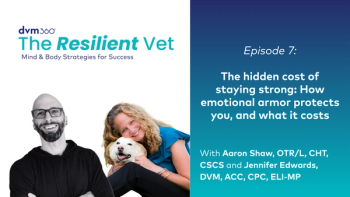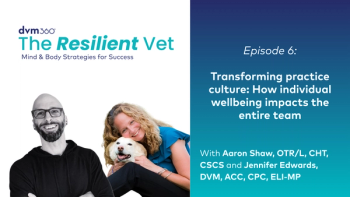
- dvm360 September 2021
- Volume 52
How to establish a healthy workplace ecosystem at your veterinary practice
Find out why motivation matters, plus how to identify common team motivational hurdles.
Creating and maintaining a healthy work environment is crucial but challenging. With staff shortages, evolving protocols in the age of a pandemic, and serving a diverse client base—cultivating an environment that allows people to bring their best selves to work is vital. The veterinary workplace is a complex network of moving parts—an ecosystem. In top-performing hospitals, the whole is greater than the sum. This means that synergy, cooperation, and engagement are all required to meet growing client and patient demands. But once you have established a team with these characteristics, how do we keep them motivated?
Why motivation matters
Motivation means different things to different people and finding out what motivates your team members will help with strategically placing them in the correct roles, creating cross-section workgroups, and tackling problems, both small and large, within the work environment. However, before we catalog an individual’s motivational impetus, there are things we must identify that not only thwart motivation but also demotivate your team members. In the corporate arena, these motivational vampires, if you will, are known as “hygiene factors,” a term coined by social psychologist Frederick Irving Herzberg. Because of the uniqueness of the veterinary field, a modification of Professor Herzberg’s traditional hygiene factors is required. Once identified, you must take action to eliminate or limit the damaging effects of these factors. Left unchecked—they can destabilize a team. Below is my modified list of motivational factors including how each factor applies to the veterinary workplace.
Ineffective supervision or guidance
Many of us can attest to the trickle-down effects of poor hospital management. Without proper guidance and supervision, the company’s goals become unclear, or worse, unattainable. Poor leadership leaves a void that is often filled with apathy and discontentment. Apathy then transforms into cynicism and eventually to high turnover. Proper guidance is required to focus the team on the hospital’s mission and goal statements and give direction on how to attain these goals while meeting the daily client and patient demands.
Ineffective or obstructive policies or practices
Some policies are put in place too generally, without considering the specific needs of individual hospitals within a network. When this occurs, a chasm is created between executive leadership, middle management, and staff. When policymakers fail to consider the personal toll executing these tasks may have, workplace morale decreases, and burnout occurs. An obstructive policy disregards or is unempathetic to the human capital required to deliver goals working under the guise of certain policies. Treating people or hospitals as monoliths causes issues if desired outcomes do not occur, which can lead to erroneous decisions or reprimands. The goals of executive leadership may not be readily available to staff on the ground level, thus creating an appearance of conflicting, if not competing motivations. Policies that are unclear or not easily explained to the workforce tend to get met with resistance, thus, leading to a missed opportunity for contributing ideas on how to make achieving the company’s goals more feasible.
Poor working conditions
The quality of workplace conditions is an often-overlooked dimension of veterinary medicine. Subtle changes to these conditions can help eliminate work stress and inspire innovative thought processes. Factors that contribute to poor work conditions include, but are not limited to, shortened lunch breaks; double-booking appointments; small and crammed break rooms; extended, and highly stressed shifts; being understaffed; and loud, incessant noises. Poor working conditions, which can be a result of intrinsic and extrinsic factors, or a combination can also be an insidious form of stress and cause employees to carry pessimistic views about the workplace.
Negative peer relations
Negative peer relations directly lead to a toxic work environment. No matter how inspired or motivated individuals are, if they do not work well together, disengagement will ensue. Backstabbing and company gossip are early signs of an unhealthy work ecosystem. Team members who cannot stand to be around one another are less likely to see the value in their teammates and to seek help when faced with a task outside of their skillset. As a result, mistakes are made, accountability is avoided, and shifting blame becomes excessive. Negative peer relations allow healthy task-related conflicts to turn into dysfunctional relationship-based conflicts. Teams that do not work well together can negatively impact the organization’s bottom line. Moreover, clients can sense dysfunction, which causes consternation and uneasiness when interpreting how care is provided to their companion animal.
High turnover
High turnover is both a cause and effect of dwindling motivation. High turnover causes more senior and experienced workers to experience burnout. Veteran workers may also experience a “teaching tax” when burdened with having to teach a constant flow of new team members. Having historically high turnover rates may indirectly send a message to employees that this place is a steppingstone, or not a place worth investing in long-term. High turnover interrupts team bonding and creates setbacks in building out an apparatus designed to better serve the needs of the hospital or clinic, and client base. Turnover because of removing obvious hiring mistakes is necessary but should not be conflated with losing or driving out otherwise exceptional employees.
Any single, or combination of the above factors will blunt motivation and must be addressed before attempting to meet individual motivational needs. If the factors go undiagnosed, they can metastasize and become a catalyst for demotivation. For your team to realize its full potential, a constant assessment of the workplace ecosystem must occur, and mechanisms must be put in place to help identify motivational obstacles.
The above list has been tailored to address the unique aspects of veterinary medicine and pays particular attention to the added, perhaps inherent, stress that caring for animal companions creates. Now that we have gained a greater understanding of possible obstacles to motivation, I implore you to implement strategies to address these hurdles at your clinic.
Charles D. McMillan, DVM, is a veterinarian with IndeVets and is based in Atlanta, Georgia, and a dvm360® editorial advisory board member. He is a 2012 graduate of Tuskegee University School of Veterinary Medicine and has a keen interest in developing the public’s understanding of veterinary medicine, finding ways to foster a healthy veterinary workplace ecosystem, and exploring workable solutions to make veterinary medicine more diverse and equitable. You can find him on Instagram at @yourfavoritepetdoc or visit his website
Articles in this issue
over 4 years ago
How would Walt Disney run a veterinary practice?over 4 years ago
Tips and tricks for performing an orthopedic examover 4 years ago
Take your team H.I.G.H.E.R.over 4 years ago
Veterinary receptionist program simplifies CSR trainingover 4 years ago
Nutritional management of urolithiasis in dogs and catsover 4 years ago
Studied cats show little interest in contrafreeloadingover 4 years ago
Designing an award-winning animal hospitalover 4 years ago
The COVID-19 pet adoption boom: Did it really happen?Newsletter
From exam room tips to practice management insights, get trusted veterinary news delivered straight to your inbox—subscribe to dvm360.




